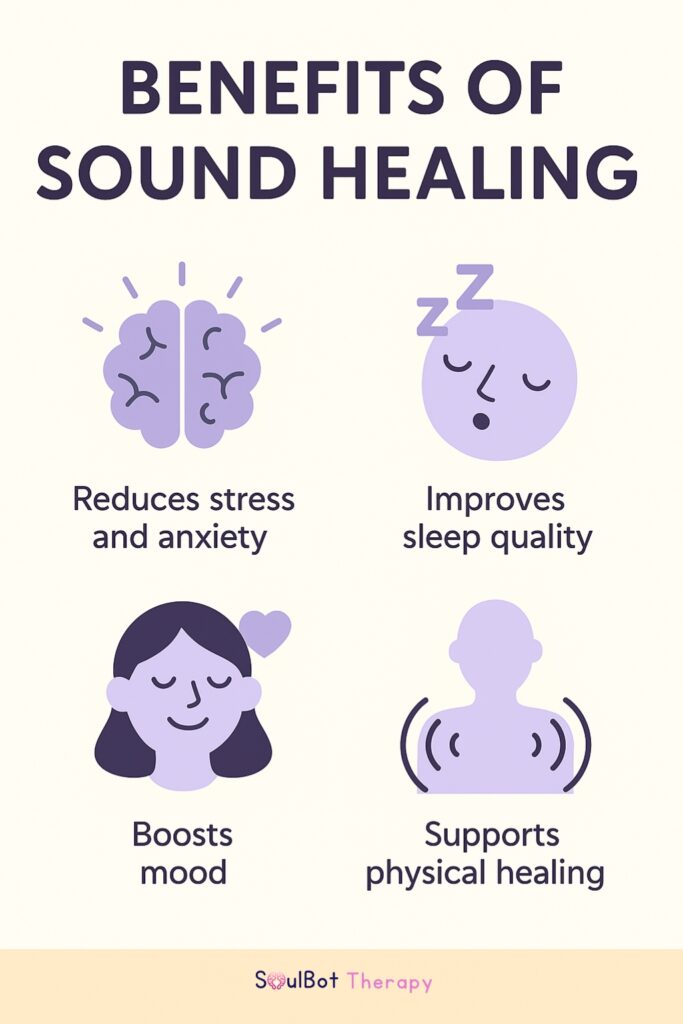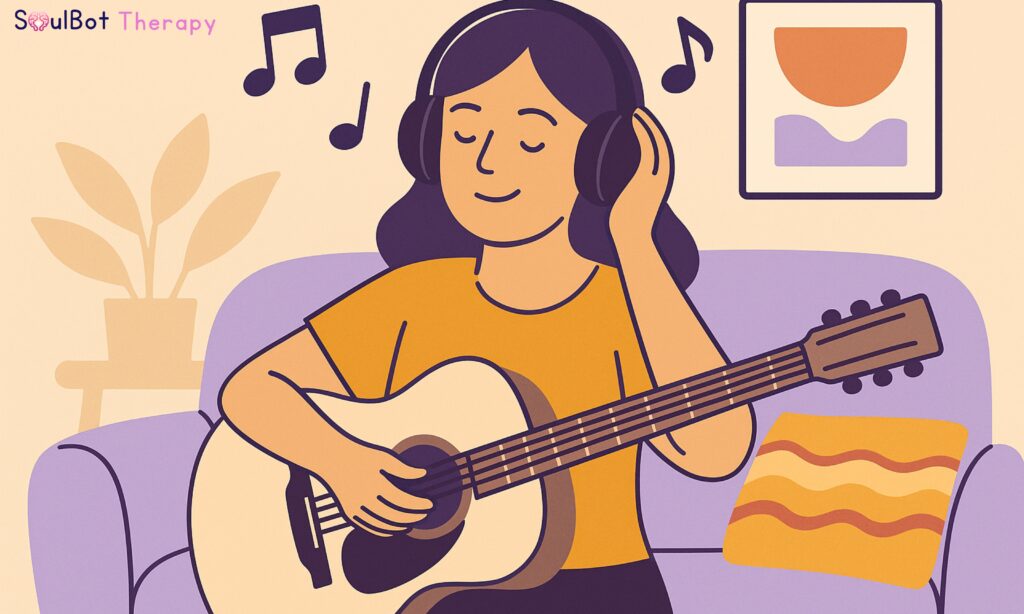Something magical happens when you close your eyes and let sound healing wash over you. It could be that moment when a singing bowl’s resonance seems to untangle the knots in your chest, or when a soft hum finally quiets the racing thoughts that have been your unwelcome companions all day.
If you’re reading this, chances are you’re looking for that same kind of relief. The beautiful truth? You don’t need to wait for a spa appointment or expensive therapy session. Your healing can start right where you are, with nothing more than intention and the power of sound.
🎵 Curious about how you connect emotionally to healing practices? Try our Love Language Test; it might reveal why certain sounds resonate deeply with your healing process.What is Sound Healing?
Let me be honest with you, when I first heard about sound healing, I was skeptical. How could specific frequencies change how I felt? But here’s what I learned:
Sound healing isn’t just playing pretty music. It’s the intentional use of vibrations and frequencies to help your nervous system remember what calm feels like.
This practice has roots that run deep thousands of years deep. Tibetan monks have used singing bowls for centuries. Indigenous cultures understood the healing power of drums and chants long before Western medicine caught up. And now, modern research proves what ancient wisdom has always known: healing through sound isn’t just real, it’s measurable.
Why Home Is the Perfect Sound Healing Space?
I wish someone had told me earlier: you don’t need a perfect setup to experience profound healing. Your living room, bedroom, or bathroom can become a sacred space for sound healing.
Stress doesn’t wait for convenient times. It builds up during your commute, in difficult conversations, and in quiet moments when your mind won’t stop spinning.
When you practice sound healing at home, you’re giving yourself permission to:
- Hit reset after those soul-crushing days
- Find focus when your mind feels scattered.
- Create a bridge between your chaotic day and restful sleep.
- Process emotions that feel too big to handle alone
- Build a consistent practice of self-care that doesn’t depend on anyone else’s schedule.
🧠SoulTip: Music therapy and sound healing can lower cortisol levels (a stress hormone), slow your racing heart, and shift your brain waves into more peaceful states. It’s not magic; it’s science meeting soul.

What are the Benefits of Sound Healing?
I’ll never forget the first time I truly experienced the benefits of sound healing. For months, I’d been carrying grief that felt like a physical weight in my chest. Twenty minutes into a sound bath recording, something shifted. The tightness began to release, tears came (the good kind), and I could take a full, deep breath for the first time in weeks.
That’s the power of healing through sound. It doesn’t just mask your symptoms; it helps your body remember how to regulate itself. Some of the most profound benefits include:
- Immediate nervous system relief – Your body literally can’t stay in fight-or-flight mode when exposed to specific calming frequencies
- Better sleep quality – Sound healing helps transition your brain from beta waves (alert) to theta waves (deeply relaxed)
- Emotional release – Sometimes we need to feel to heal, and sound creates a safe container for that process
- Physical pain reduction – Chronic pain often has emotional components that sound healing can address
- Enhanced mental clarity – When your nervous system calms down, your mind can finally focus
These aren’t just lovely ideas; they’re fundamental changes you can feel in your body, often within minutes of starting a session.
📊SoulFact: Harvard research reveals that music directly connects to your brain's limbic system, helping you access the relaxation response and calm your nervous system by slowing down breathing and shifting your mind away from worry
How do you create your personal sound healing routine?
You don’t need fancy equipment or a Pinterest-perfect meditation room. Some of my most powerful sound healing sessions have happened curled up on my couch with headphones and dim lighting.
Here’s how to create your own healing space:
- Start simple: Find a quiet corner where you won’t be interrupted. Even your car can work if it’s your only private space.
- Focus on sound quality: Good speakers or headphones make a real difference. You want to feel the vibrations, not just hear them.
- Set the mood: Dim lights, candles, or even just closing your eyes help signal your nervous system that it’s time to slow down.
- Choose your sounds mindfully. Look for recordings specifically designed for healing, such as singing bowls, gongs, or binaural beats. Apps and YouTube have incredible collections of calming music for anxiety.
- Trust your body. Some days, you might need deep, resonant sounds; other days, higher frequencies feel right. Listen to what your body is asking for.
Daily Sound Healing Practice: A 10-Minute Reset
This is the routine that changed my relationship with stress. It’s simple enough to do anywhere, powerful enough to shift your entire day:
- Minutes 1-2: Arrive
Sit or lie down comfortably. Place one hand on your heart, one on your belly. Set an intention: “I release what doesn’t serve me” or “I am safe.”
- Minutes 3-7: Listen
Start your chosen sound healing track. Close your eyes and focus on how the vibrations feel in your body. Don’t try to empty your mind; notice where the sound seems to land.
- Minutes 8-10: Integrate
As the sounds fade, take three deep breaths. Notice any shifts in your body, mood, or energy. This isn’t about dramatic transformation; sometimes healing feels like the quietest relief.
This practice becomes one of your most reliable at-home relaxation tools. You can use it before job interviews, after difficult conversations, and nights when sleep feels impossible. It works because it’s consistent, accessible, and doesn’t require you to be anywhere other than exactly where you are.
📊SoulFact: A comprehensive study found that music listeners scored significantly higher on mental well-being assessments and showed reduced levels of anxiety and depression compared to non-listeners
Sound Healing Meets Modern Support
Suppose you’re exploring holistic wellness at home. In that case, tracking how different practices affect your emotional patterns is helpful. Tools like SoulBot can be invaluable, offering daily mood check-ins and personalized support that complements your sound healing practice.
🧘Let SoulBot walk that road with you.
Sometimes the combination of ancient wisdom and modern technology creates the perfect support system for your healing journey.








